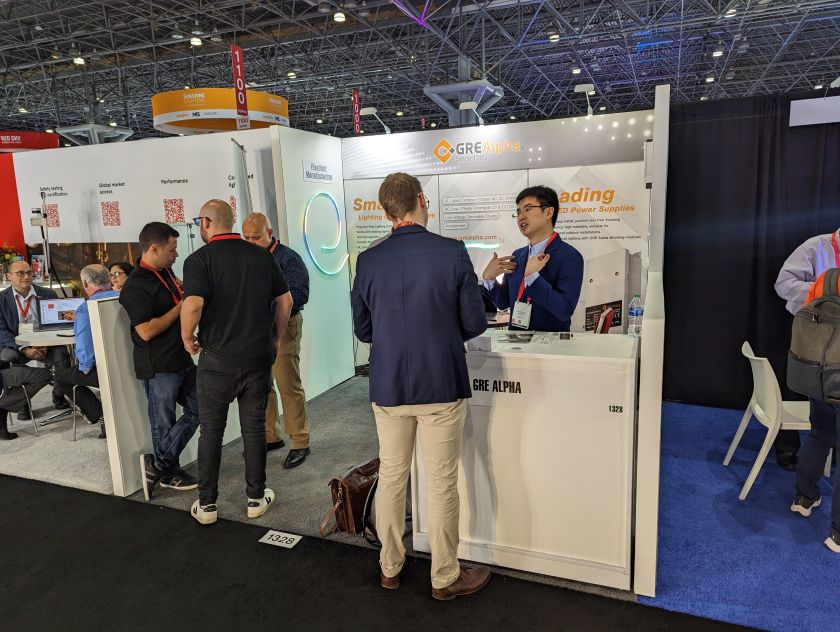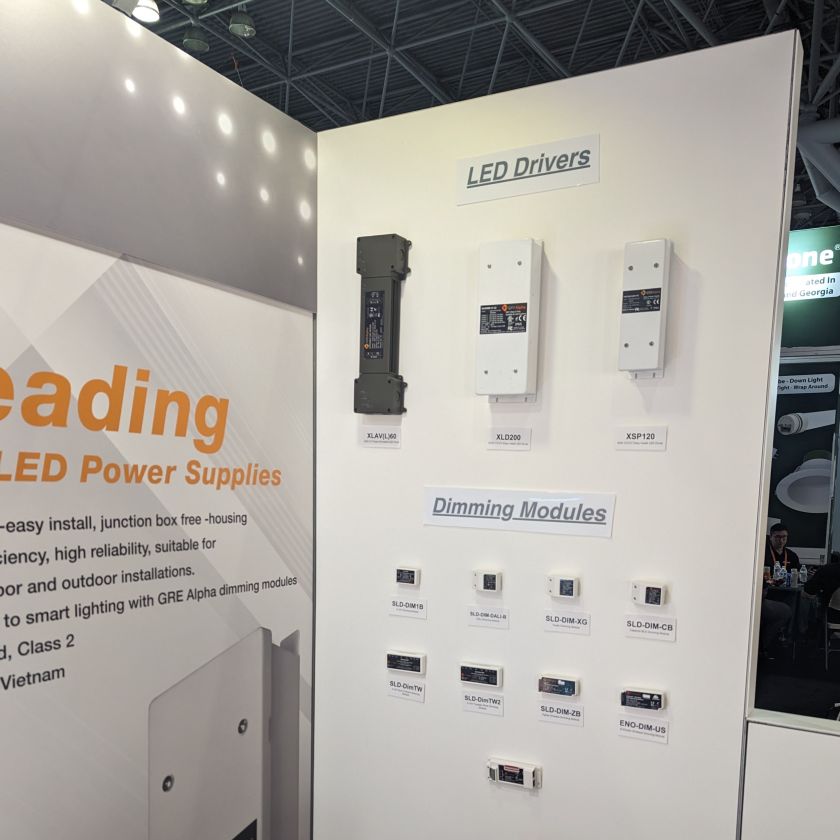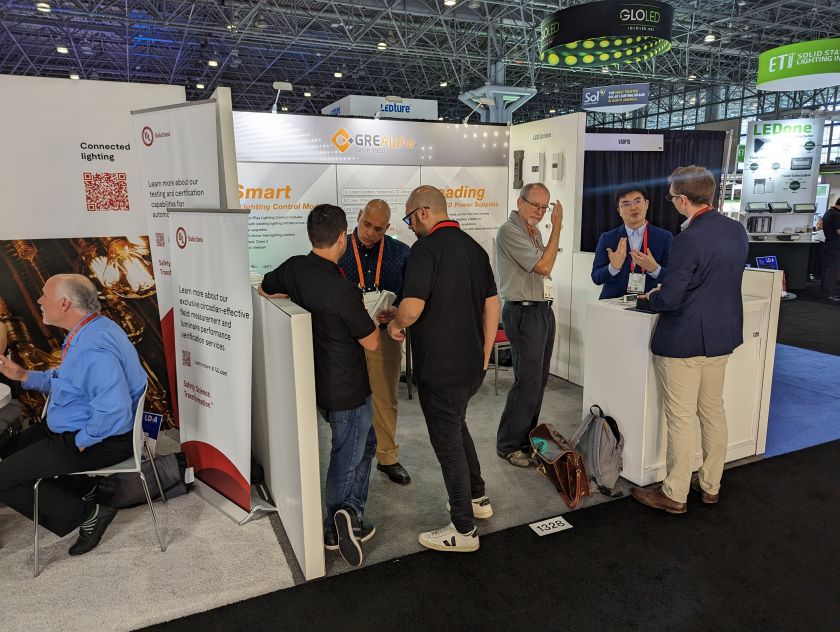Determine Wire Size with Our Load Wiring Calculator
July 18th 2023Determine Wire Size with Our Load Wiring Calculator
Do you struggle to calculate DC maximum load and wire sizes for your LED power transmission? Dealing with complex calculations can be a hassle, especially in the midst of a project. The GRE-Alpha website features an easy-to-use load-wiring calculator that can simplify your life. GRE Alpha’s resource section has a tool for people who want to determine the approximate wire gauge/size based on the length of the wire (in Meters or Feet) and the current (in Amps)
Our calculator helps you determine:
It is all based on science—we show our formulas right on the page. For more detail, the EEP - Electrical Engineering Portal does a great job of explaining how the calculations work. Some manufacturers even provide their own load-wiring calculators specific to their products, so be sure to do your research and find a load-wiring calculator that works for your specific needs.
Tips for using a load-wiring calculator
- Ensure that you have accurate input data
- Use a calculator that is compatible with your specific project
- Double-check your calculations
- Check your spec sheets
- Make sure you are using the appropriate wire gauge and type for the installation
Simplifying complex calculations can save you both time and money in the long run while also ensuring that your project is safe and efficient. To learn more about load wiring calculators, read our article on the subject or try the calculator and see how it can simplify your life!
If you like what you see, refer a colleague, follow us on LinkedIn, or check out more news at grealpha.com to see how we can help you.
GRE Alpha Team Thanks Valued Customers for Visiting Showcase at LightFair 2023
With LightFair 2023 now behind us, we’re happy to say that the event showed the resilience of the architectural and commercial lighting industry. In-person attendance improved over 2022, and we had the chance to meet with our peers at the Javits Center in New York.

We showcased some of our most innovative lighting control solutions, including Casambi, Tuya, and EnOcean products:
For 2023, we put the spotlight on three products all featured in our catalogs:
- Model GLD-DIM-TW-CB2 - 2-channel dim-to-warm / tunable white, CC output, Casambi BLE-based dimming module. Users download the Casambi app to their iOS or Android device to control all their enabled COB light fixtures
- Model SLD-DIM–CB2-UL - 2-channel, multi-function, CV output, Casambi BLE-based dimming module that can be set for tunable white, dim to warm, and static dimming via the Casambi app for use in linear tape/strip lighting applications
- Model SLD-DIM-CB5 - 5-channel, RGBWW, CV output, Casambi BLE dimming module for use in RGB and tunable white linear tape/strip lighting applications

More importantly, we thoroughly enjoyed meeting with our valued customers and networking with industry professionals with the same passion for innovation as we have at GRE Alpha.

We look forward to future collaborations with the professionals we met at LightFair 2023 and seeing our valued customers at future events.
Follow us on LinkedIn sign up for our newsletter to see where we’ll be next.
LED Surge Protection for Storm Season - What You Need to Know
Storm season is upon us—depending on where you live, you’ll want to be prepared. Whether you’re an individual protecting your home and your family or a business owner trying to do what’s best for your company, being ready can mean the difference between huge losses and getting through to the other side relatively unscathed.
The safety basics always come first. However, once those needs are covered, there are steps you can take to protect your expensive investments.
For example, safeguard your LED lighting systems.
LEDs are incredibly durable and are built with sturdy components that are rugged and can withstand extreme conditions, yet no technology is fool proof. To help you get through storm season with your valuable electronics, here’s what you need to know about surge protection.
How Power Surges Affect LED Lighting Systems
A surge is an intense increase in voltage within an electrical circuit—for LED lighting systems; surges can wear out the LED drivers, which wears down the lifecycle of your luminaires and causes interruptions.
Here’s the thing: Not all surges are the same.
You have two common types of surges:
- Lightning-related surges
- Artificially-generated surges
With storm-related surges, we’re talking about option one.
When it comes to lightning-related surges, their magnitude is significantly greater, accompanied by a much larger release of energy. However, their duration is noticeably shorter—this is because lightning's presence is brief, particularly in comparison to other forms of energy. Consequently, the effects of a lightning-related surge are easily recognizable due to the localized, catastrophic, and extensive damage it inflicts on equipment. Compare this to an artificially-generated surge that causes more widespread damage but is less catastrophic.
The best way to protect against this damage and keep your investments from failing is to use surge protection.
Surge protection devices can be installed on a vulnerable line in series or parallel.
In series, surge protectors act like fuses—in the event of a surge, the luminaires will shut down, but the surge protector will keep the lighting system from being damaged down the line.
In parallel, the surge protector will keep the lighting system working through the surge even after the protector is damaged. In this case, you’ll sacrifice some lifecycle for the lighting system to continue functioning correctly through any surge event.
How Much Surge Protection Should Units Have?
LED lighting systems represent a considerable cost and time investment—because of this, it’s more important than ever to ensure that you have adequate protection for your investment. Using surge limiters will safeguard LED lighting circuits from potential damage and extend the lifespan of your investment.
While surge protection cannot guarantee absolute immunity, it significantly reduces the risk of extensive damage caused by surges. This is precisely why the surge limiter market continues flourishing—especially as more companies and municipalities switch to LED lighting to capitalize on its benefits. Surge limiters are relatively easy to install and cost-effective, particularly compared to the potential expenses incurred from LED driver damage.
For example, the GRE Alpha SEL-20kA - this device offers the utmost protection for any LED lighting investment, guarding against both direct and indirect lightning strikes. It’s also fully potted, enabling reliable operation in both indoor and outdoor installations.
Key features of the GRE Alpha SEL-20kA include:
- Surge protection of up to 20kA/20kV
- UL Type 2 SPD
- Line to Line and Line to Ground protection
- LED indicator for device status
- IP65 rated for protection against dust and water ingress
- Temperature range of -40 to 70 degrees Celsius
The SEL-20kA is suitable for various applications, including outdoor lighting signage, parking lots, etc.
Protect Your Investment With the Right Surge Protector
With storm season here, don’t let your investment fall to catastrophic surges. The right surge protection devices will help you protect your investment, like GRE Alpha’s SEL-20kA, and reap the benefits of LED lighting for years.
Protect your investment with GRE Alpha today!
Differences Between Class 1 and 2, Class I and II LED Drivers
Not all drivers are created equal when it comes to power LED lights. When it comes to lighting systems, understanding the differences between the classes of LED drivers is key. There are two separate ways to classify LED drivers. Pay attention to the way the class is written. It is common to see descriptions for classes 1, 2, I, and II. A classification using roman numerals has a totally different meaning than a description written in Arabic. But what’s the difference between them? Let’s explore this important topic in more detail.
Class 1 and Class 2 LED Drivers
These safety classifications are specified by Underwriters Laboratories Inc. (UL). UL is a well-known and respected organization that excels in the certification and standards development of products for safety. LED drivers with UL designation have had rigorous tests to ensure peak quality and performance to industry standards.
Class 1
An LED driver with a UL Class 1 rating has a high-voltage output, and safety protection is required within the fixture. This type of driver is best suited for medium-to-large scale projects where energy efficiency and cost savings are desired results. They can also be used for industrial applications where constant illumination is required over long periods of time.
Class 2
UL Class 2 LED drivers comply with standard UL1310, meaning output is considered safe to contact, and no major safety protection is required at the LED/luminaire level. UL Class 2 drivers operate using
Learn more about UL listings and UL recognized designations
Class I and II LED Drivers
International Electrotechnical Commission (IEC) is the world's leading organization that establishes and publishes international standards for all electrical, electronic, and related technologies. LED Drivers depend on IEC Class II and Class I Insulation Protection standards to meet LED driver safety requirements. These two insulation levels indicate how an LED driver is electrically isolated from the main power supply.
Class I
IEC class I protects against electric shock by combining a safe earth ground and basic insulation. A common example of basic insulation is the insulation present on wires.
Class II
The driver will have double-insulated construction or a single layer of reinforced insulation. The first layer of insulation is typically called “Basic Insulation.” The second layer of insulation is often an insulating case enclosing the product, such as the plastic case present on wall mount This class requires no ground connection.
More Class 2 vs. II Considerations
In addition to UL and IEC designations, the NEC (National Electric Code has a separate rating system. That can confuse the difference between Class 2 and Class II-rated ac-dc power supplies. The differences are important to understand. The NEC Class 2 refers to the output voltage and power capabilities of ac-dc supplies. In contrast, the IEC is a designator of protection.
GRE Alpha’s LED Drivers
GRE Alpha’s unique approach to modular LED lighting allows its dimming modules and drivers to be used in either new or existing lighting installations. Most of our LED drivers are UL /cUL Listed* Class 1 and 2. Lighting designs can be customized or upgraded, and designers can create unique configurations adapting to size and space requirements.
Some of the most common applications for our LED drivers and dimming modules include:
- Architectural lighting
- Effect and contour lighting
- General commercial illumination
- Warehouses
- Signage
- Strip lighting
- Smart lighting
Looking For More Information?
It’s clear that there are some major distinctions between LED drivers – from their electrical configurations to their ideal applications. Now that you know more about the different types of LED driver classification, you should be able to select the right one for your needs. Please browse GRE Alpha’s selection of high-quality LED drivers by checking out our product page or reviewing our catalogs.
GRE Alpha is Geared Up for LightFair 2023
May 16th 2023GRE Alpha is Geared Up for LightFair 2023
GRE Alpha, a leader in the field of lighting controls and drivers, will be exhibiting LED Dimmers and drivers at LightFair 2023 at the Javits Center in New York City. The trade show takes place May 23-25, with the conference running from May 21-25. At booth no. 1328 on the third level, attendees can experience GRE Alpha's newest products firsthand. “We are excited to be a part of this year's LightFair as it brings together professionals from all across the globe," said Richard Fong, Executive Director at GRE Alpha. The event, which drew over 10,000 people from 63 countries in 2022, is expected to be even bigger and better in 2023.
GRE Alpha is proud to demonstrate products featuring compatibility with some of the world's leading partners, such as Casambi, Tuya, and EnOcean. These exciting collaborations appeal to a global audience and offer customers unprecedented access to innovative solutions that exceed global safety and efficiency standards. We look forward to continuing our work with these partners and creating an even greater network in the years to come.
Here are some of the featured products for 2023:
- Model GLD-DIM-TW-CB2. - 2-channel dim-to-warm / tunable white, CC output, Casambi BLE-based dimming module. Users download the Casambi app to their iOS or Android device to control all their enabled COB light fixtures
- Model SLD-DIM–CB2-UL - 2-channel, multi-function, CV output, Casambi BLE-based dimming module that can be set for tunable white, dim to warm, and static dimming via the Casambi app, for use in linear tape/strip lighting applications
- Model SLD-DIM-CB5 - 5-channel, RGBWW, CV output, Casambi BLE dimming module for use in RGB and tunable white linear tape/strip lighting applications
See GRE Alpha’s product catalogs or contact their team for more information.
GRE Alpha is honored to be a regular guest at LightFair International, and we can’t wait to demonstrate our cutting-edge products. The company's LED dimmers and drivers are engineered to bring efficiency and precision to lighting systems by providing flexible control options while reducing energy consumption and maintenance costs. Their suite of LED power supplies and controllers is designed for use in commercial applications such as offices, schools, hospitals, retail stores, and more.
About GRE Alpha
GRE Alpha® Electronics, Ltd. specializes in the design and manufacturing of solid-state lighting power supplies and lighting control accessories, which are the lifeblood of indoor and outdoor LED lighting systems. Their superior performance products are the power behind LED lighting systems. GRE's unique modular approach allows its dimming modules and drivers to be used in either new or existing installations. For more information, visit GREAlpha.com. Follow us on LinkedIn: GRE Alpha.
About LightFair
LightFair, the world’s largest architectural and commercial lighting trade show and conference, is owned by the International Association of Lighting Designers (IALD) and the Illuminating Engineering Society (IES). The event is produced and managed by International Market Centers. For more information, visit LightFair.com. Follow LightFair on Facebook, Twitter @LightFair, Instagram @LightFair_international, LinkedIn and YouTube. To stay up to date on lighting industry news leading up to LightFair, visit the LightFair Blog at www.LightFairblog.com.